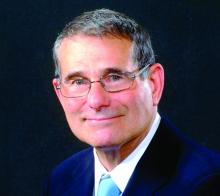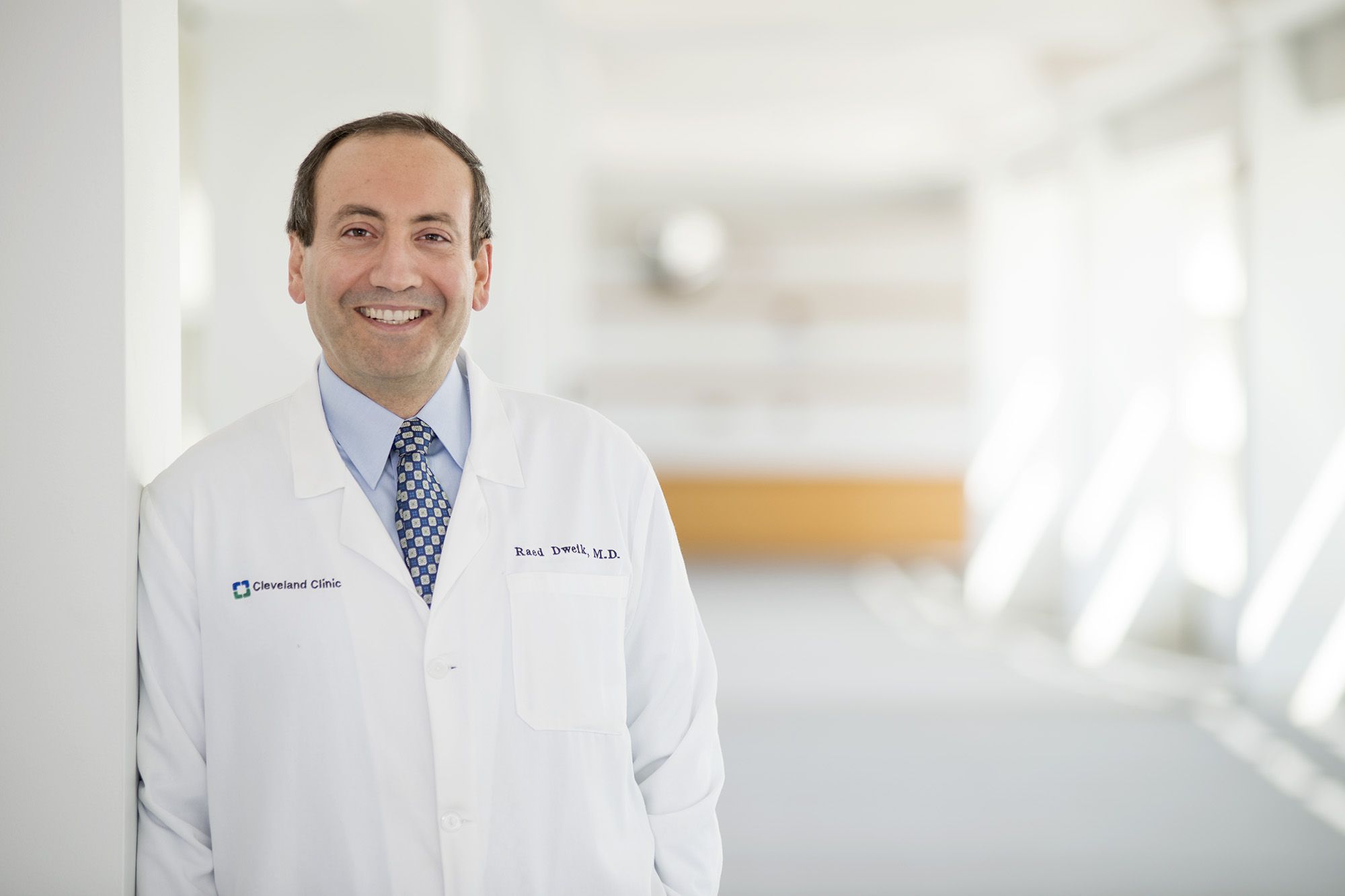User login
Just as conflict of interest (COI) disclosure has moved center stage in recent months, so too have certain physician-industry relationships. Some cancer centers and academic medical institutions across the country have reinvigorated or renewed discussions about the participation of leaders on outside corporate boards and about how to best navigate an increasingly complex web of individual and institutional relationships with industry.
Memorial Sloan Kettering Cancer Center (MSK), which was thrust into the spotlight last fall with news coverage of a top leader’s disclosure failures and coverage of other leaders’ financial relationships with start-up companies, has decided that its senior executives may no longer serve on boards of directors of for-profit health- or science-related companies.
MSK officials also decided that its board members may not serve on the boards of MSK-affiliated start-up companies or make any direct investments in them.
Other institutions, such as the Fred Hutchinson Cancer Research Center in Seattle, were also reviewing their conflict of interest policies.
Participation of academic medical center leaders on the boards of public companies is one of the “most important topics” of discussion – along with disclosure – among those who oversee and manage COI through institutional research offices and COI committees, said Raed Dweik, MD, MBA, chair of Cleveland Clinic’s Innovation Management and COI Committee.
Discussions cover “whether [participation on outside boards] should be allowed in the first place, how relationships should be managed if they’re allowed, and whether there should be limits on compensation,” said Dr. Dweik, who also chairs the American Association of Medical Colleges’ Forum on Conflict of Interest in Academe, a group of over 600 representatives from academic health centers, medical schools, teaching hospitals, and other hospitals and centers with substantive research programs.
Institutions have been grappling with these issues for years. But “what was reported [about] MSK has brought these topics into hyperfocus in a way,” he said, along with questions concerning the magnitude of compensation and financial interest more broadly.
Institutional approaches
One of the reports on MSK’s financial ties involved a vice president and expert in technology transfer who was appointed to the board of a biotech company, Y-mAbs, in which MSK had an equity stake; the vice president had stock options that soared when the start-up went public. (He later turned over a nearly $1.4 million windfall profit to the hospital.)
In addition to barring appointments of its leaders to boards of MSK start-ups and any direct investments in them, MSK announced that going forward, “any potential equity that could be attained by employees appointed as MSK designees to outside boards will be returned to the institution and dedicated to research.”
A letter to MSK staff also said that “when profits emerge through the monetization of our research, financial payments to MSK-designated board members should be used for the benefit of the institution.”
Broadly speaking, conflict of interest deliberations within institutions center on how financial relationships with industry can potentially compromise the integrity of research (from patient selection to data analysis and the reporting of findings), the safety of research subjects and other patients, and the protection of public trust in physicians and their institutions.
Public trust is important, said Heather Pierce, JD, MPH, senior director of science policy and regulatory counsel for the Association of American Medical Colleges.
“In some cases, institutions may decide,” she said, “that they can control for any potential bias in research, but they can’t control for a perception that a person should not be engaged, or should not be compensated by a company because of appearance.”
Institutions are guided by federal regulations and institutional considerations that deal mainly with “how to evaluate and assess [potential conflicts] and the types of information needed [to do so] – not with specific delineations on what types of relationships are prohibited or not,” said Ms. Pierce. “There are some bright lines, but most things are a lot more complicated.”
Since 2001, the AAMC has recommended the use of a rebuttable presumption framework, in which individuals with a financial interest are prohibited from participating in related research unless “compelling circumstances” justify an exemption. Institutions typically use a “de minimis threshold” to define what financial interests are significant enough for application of the rebuttable presumptions framework.
Cleveland Clinic’s COI Committee considers anything above $20,000 from one company to be significant for the purposes of rebuttable presumption. Compensation between $5,000 and $20,000 (per company per year) triggers a COI management plan that typically focuses on disclosure, but can also include elements such as limits on compensation or the involvement of nonconflicted individuals in data analysis, Dr. Dweik said.
“Anything above $20,000, or equity, we more deeply scrutinize,” he said. “You have to have a really good reason to participate in research related to that company or product. There have to be compelling circumstances.”
Any amount of equity, he emphasized, “is automatically treated as high compensation, because the potential value is high. We are very keenly aware of this in our decisions about what research goes through and what doesn’t.”
Compensation of $5,000 or less is generally considered low at Cleveland Clinic and other institutions (and not in need of COI management), in keeping with U.S. Department of Health and Human Services regulations designed to promote objectivity in research. Thresholds for rebuttable presumption vary from institution to institution, with some being much higher – around $50,000 – than at the Cleveland Clinic, said Dr. Dweik, a pulmonary and critical care medicine specialist who chairs the clinic’s Respiratory Institute.
The big challenge with industry ties involving key executives and leaders – chief medical officers, deans, department chairs, and division chiefs – is that these ties involve institutional COI (not only individual COI) since an individual’s conflicts can be imputed to the institution.
Institutional COI issues generally are much “trickier” for the AAMC’s COI forum to discuss and guide because institutions have different structures and cultures, Dr. Dweik said. Institutional start-ups, moreover, have no standard structure.
“Some institutions, once a company is spun off, will build a firewall between the institution and the company,” he said. “Some institutions will keep the company embedded within the inventor’s lab, or provide infrastructure. And there’s a lot in between.”
Regarding the participation of academic medical center leaders on outside boards, it appears “that institutions are all over the map” in how they regard and evaluate such relationships, Dr. Dweik said. Some institutions address these relationships in their COI policies, while others don’t. And “some are more liberal,” he said. “Others are stricter.”
The magnitude of personal financial interest among MSK leaders (both in institutional start-ups and other companies) is “way outside the norm,” Dr. Dweik said.
Still, board participation can be quite lucrative. One study described in a research letter in JAMA 2014;311[13]:1353-5 5 years ago reported that the mean financial compensation of pharmaceutical company board members who held academic medical center leadership positions was more than $300,000 corporate board participation is “one of the most egregious examples of conflict of interest,” said Vinay Prasad, MD, MPH , a hematologist-oncologist and associate professor of medicine at Oregon Health & Science University, who researches COI and bias. “You have a fiduciary duty to the company’s best interest. … so there will inevitably be a tension between that oath and your other duties,” from responsibilities for institutional oversight to one’s individual research and clinical practices, he said. Physicians at academic medical centers and cancer centers “need to interact with industry,” he said. “But it’s about creating independence.”
A muddied field
S. Vincent Rajkumar, MD, a hematologist-oncologist and active researcher at the Mayo Clinic in Rochester, agrees. “Being on the board of directors of a pharmaceutical company, particularly by institutional leaders, is one of the genuine COIs” amid a field of COI that’s become increasingly muddied with the shift toward more comprehensive, general disclosure practices.
“It’s important that we don’t lose sight of clarity in what types of financial ties and relationships we’re really concerned about,” he said. “The ties that are really concerning – the significant conflicts of interest – are serving on boards of companies or getting large personal payments for participating in speakers’ bureaus or single, company-sponsored CME lectures, for instance, or having stocks, investments, or significant royalties or large payments to your lab or research program [outside of clinical trial funding].”
Other financial transactions such as “reasonable” payments for participation in data-monitoring committees and steering committees are financial ties that should be disclosed, but generally aren’t concerning, Dr. Rajkumar said.
Dr. Rajkumar serves as an editor-in-chief of the Blood Cancer Journal and is an author of several UptoDate chapters. Because of these roles and in keeping with his own views on COI, he has worked deliberately over the past decade to be free of industry payments.
This has become increasingly difficult given the breadth of payments attributed to individual physicians on the federal Open Payments website – some of which are “not truly personal financial ties.” He cited industry payments to support multicompany-sponsored meetings or to institutions for clinical trials.
“It’s nearly impossible to have zero dollars against your name unless you do no clinical trials,” Dr. Rajkumar said.
Still, he said, transparency and disclosure programs like Open Payments are important. “I do think bias arising from COI is very real. There are people with significant conflicts of interest who are writing influential reviews, speaking at influential meetings, and writing influential guidelines – and you can sense the bias pretty quickly,” he said, with endpoints that aren’t appropriate for the trial at hand, for instance, or with overly rosy assessments and the exclusion of negative results.
Collaboration benefits
But Thomas Stossel, MD, American Cancer Society Professor of Medicine Emeritus at Harvard Medical School and founder and chief science advisor at BioAegis Therapeutics, worries that the benefit of physician-industry collaboration is being drowned out with all the attention paid to COI.
His experience on a scientific advisory board in the late 1980s was a “transforming experience that opened my eyes to [the complexities] of product development. … and [later] enabled me to turn my basic research into a potentially life-saving product,” he said.
The “conflict-of-interest narrative” falsely maintains that collaboration causes corruption, he said, and the resultant “hand wringing over [assumed risks]” has slowed innovation by preventing or delaying research and development projects. “It’s like death by a thousand cuts,” said Dr. Stossel, who wrote a book, Pharmacophobia – How the Conflict-of-Interest Myth Undermines American Medical Innovation, to document his concerns.
Dr. Dweik said he has seen the “field move in a good direction” with most academic institutions now deeming physician participation in drug company speakers’ bureaus as “no longer acceptable,” unless physicians discuss drugs in balanced, “disease-specific, not drug-specific” presentations. At this point, it’s unclear exactly how the needle will move on other types of relationships.
“I wouldn’t be surprised if over the next couple of years there is more consistency, more standardization” on issues of participation on outside boards. “The [academic medical center] community is certainly trying to get a better handle on this,” Dr. Dweik said.
Future institutional changes will come, said Ms. Pierce of the AAMC, “but in more subtle ways than we’ve seen in the past, given [progress] already made” through major reports, guidance, and laws and regulations relating to COI. Today, she said, “technology transfer is incrementally more complicated, relationships are more complicated, and corporate structures are more complicated. This makes teasing apart what the issues are a little bit harder.”
Just as conflict of interest (COI) disclosure has moved center stage in recent months, so too have certain physician-industry relationships. Some cancer centers and academic medical institutions across the country have reinvigorated or renewed discussions about the participation of leaders on outside corporate boards and about how to best navigate an increasingly complex web of individual and institutional relationships with industry.
Memorial Sloan Kettering Cancer Center (MSK), which was thrust into the spotlight last fall with news coverage of a top leader’s disclosure failures and coverage of other leaders’ financial relationships with start-up companies, has decided that its senior executives may no longer serve on boards of directors of for-profit health- or science-related companies.
MSK officials also decided that its board members may not serve on the boards of MSK-affiliated start-up companies or make any direct investments in them.
Other institutions, such as the Fred Hutchinson Cancer Research Center in Seattle, were also reviewing their conflict of interest policies.
Participation of academic medical center leaders on the boards of public companies is one of the “most important topics” of discussion – along with disclosure – among those who oversee and manage COI through institutional research offices and COI committees, said Raed Dweik, MD, MBA, chair of Cleveland Clinic’s Innovation Management and COI Committee.
Discussions cover “whether [participation on outside boards] should be allowed in the first place, how relationships should be managed if they’re allowed, and whether there should be limits on compensation,” said Dr. Dweik, who also chairs the American Association of Medical Colleges’ Forum on Conflict of Interest in Academe, a group of over 600 representatives from academic health centers, medical schools, teaching hospitals, and other hospitals and centers with substantive research programs.
Institutions have been grappling with these issues for years. But “what was reported [about] MSK has brought these topics into hyperfocus in a way,” he said, along with questions concerning the magnitude of compensation and financial interest more broadly.
Institutional approaches
One of the reports on MSK’s financial ties involved a vice president and expert in technology transfer who was appointed to the board of a biotech company, Y-mAbs, in which MSK had an equity stake; the vice president had stock options that soared when the start-up went public. (He later turned over a nearly $1.4 million windfall profit to the hospital.)
In addition to barring appointments of its leaders to boards of MSK start-ups and any direct investments in them, MSK announced that going forward, “any potential equity that could be attained by employees appointed as MSK designees to outside boards will be returned to the institution and dedicated to research.”
A letter to MSK staff also said that “when profits emerge through the monetization of our research, financial payments to MSK-designated board members should be used for the benefit of the institution.”
Broadly speaking, conflict of interest deliberations within institutions center on how financial relationships with industry can potentially compromise the integrity of research (from patient selection to data analysis and the reporting of findings), the safety of research subjects and other patients, and the protection of public trust in physicians and their institutions.
Public trust is important, said Heather Pierce, JD, MPH, senior director of science policy and regulatory counsel for the Association of American Medical Colleges.
“In some cases, institutions may decide,” she said, “that they can control for any potential bias in research, but they can’t control for a perception that a person should not be engaged, or should not be compensated by a company because of appearance.”
Institutions are guided by federal regulations and institutional considerations that deal mainly with “how to evaluate and assess [potential conflicts] and the types of information needed [to do so] – not with specific delineations on what types of relationships are prohibited or not,” said Ms. Pierce. “There are some bright lines, but most things are a lot more complicated.”
Since 2001, the AAMC has recommended the use of a rebuttable presumption framework, in which individuals with a financial interest are prohibited from participating in related research unless “compelling circumstances” justify an exemption. Institutions typically use a “de minimis threshold” to define what financial interests are significant enough for application of the rebuttable presumptions framework.
Cleveland Clinic’s COI Committee considers anything above $20,000 from one company to be significant for the purposes of rebuttable presumption. Compensation between $5,000 and $20,000 (per company per year) triggers a COI management plan that typically focuses on disclosure, but can also include elements such as limits on compensation or the involvement of nonconflicted individuals in data analysis, Dr. Dweik said.
“Anything above $20,000, or equity, we more deeply scrutinize,” he said. “You have to have a really good reason to participate in research related to that company or product. There have to be compelling circumstances.”
Any amount of equity, he emphasized, “is automatically treated as high compensation, because the potential value is high. We are very keenly aware of this in our decisions about what research goes through and what doesn’t.”
Compensation of $5,000 or less is generally considered low at Cleveland Clinic and other institutions (and not in need of COI management), in keeping with U.S. Department of Health and Human Services regulations designed to promote objectivity in research. Thresholds for rebuttable presumption vary from institution to institution, with some being much higher – around $50,000 – than at the Cleveland Clinic, said Dr. Dweik, a pulmonary and critical care medicine specialist who chairs the clinic’s Respiratory Institute.
The big challenge with industry ties involving key executives and leaders – chief medical officers, deans, department chairs, and division chiefs – is that these ties involve institutional COI (not only individual COI) since an individual’s conflicts can be imputed to the institution.
Institutional COI issues generally are much “trickier” for the AAMC’s COI forum to discuss and guide because institutions have different structures and cultures, Dr. Dweik said. Institutional start-ups, moreover, have no standard structure.
“Some institutions, once a company is spun off, will build a firewall between the institution and the company,” he said. “Some institutions will keep the company embedded within the inventor’s lab, or provide infrastructure. And there’s a lot in between.”
Regarding the participation of academic medical center leaders on outside boards, it appears “that institutions are all over the map” in how they regard and evaluate such relationships, Dr. Dweik said. Some institutions address these relationships in their COI policies, while others don’t. And “some are more liberal,” he said. “Others are stricter.”
The magnitude of personal financial interest among MSK leaders (both in institutional start-ups and other companies) is “way outside the norm,” Dr. Dweik said.
Still, board participation can be quite lucrative. One study described in a research letter in JAMA 2014;311[13]:1353-5 5 years ago reported that the mean financial compensation of pharmaceutical company board members who held academic medical center leadership positions was more than $300,000 corporate board participation is “one of the most egregious examples of conflict of interest,” said Vinay Prasad, MD, MPH , a hematologist-oncologist and associate professor of medicine at Oregon Health & Science University, who researches COI and bias. “You have a fiduciary duty to the company’s best interest. … so there will inevitably be a tension between that oath and your other duties,” from responsibilities for institutional oversight to one’s individual research and clinical practices, he said. Physicians at academic medical centers and cancer centers “need to interact with industry,” he said. “But it’s about creating independence.”
A muddied field
S. Vincent Rajkumar, MD, a hematologist-oncologist and active researcher at the Mayo Clinic in Rochester, agrees. “Being on the board of directors of a pharmaceutical company, particularly by institutional leaders, is one of the genuine COIs” amid a field of COI that’s become increasingly muddied with the shift toward more comprehensive, general disclosure practices.
“It’s important that we don’t lose sight of clarity in what types of financial ties and relationships we’re really concerned about,” he said. “The ties that are really concerning – the significant conflicts of interest – are serving on boards of companies or getting large personal payments for participating in speakers’ bureaus or single, company-sponsored CME lectures, for instance, or having stocks, investments, or significant royalties or large payments to your lab or research program [outside of clinical trial funding].”
Other financial transactions such as “reasonable” payments for participation in data-monitoring committees and steering committees are financial ties that should be disclosed, but generally aren’t concerning, Dr. Rajkumar said.
Dr. Rajkumar serves as an editor-in-chief of the Blood Cancer Journal and is an author of several UptoDate chapters. Because of these roles and in keeping with his own views on COI, he has worked deliberately over the past decade to be free of industry payments.
This has become increasingly difficult given the breadth of payments attributed to individual physicians on the federal Open Payments website – some of which are “not truly personal financial ties.” He cited industry payments to support multicompany-sponsored meetings or to institutions for clinical trials.
“It’s nearly impossible to have zero dollars against your name unless you do no clinical trials,” Dr. Rajkumar said.
Still, he said, transparency and disclosure programs like Open Payments are important. “I do think bias arising from COI is very real. There are people with significant conflicts of interest who are writing influential reviews, speaking at influential meetings, and writing influential guidelines – and you can sense the bias pretty quickly,” he said, with endpoints that aren’t appropriate for the trial at hand, for instance, or with overly rosy assessments and the exclusion of negative results.
Collaboration benefits
But Thomas Stossel, MD, American Cancer Society Professor of Medicine Emeritus at Harvard Medical School and founder and chief science advisor at BioAegis Therapeutics, worries that the benefit of physician-industry collaboration is being drowned out with all the attention paid to COI.
His experience on a scientific advisory board in the late 1980s was a “transforming experience that opened my eyes to [the complexities] of product development. … and [later] enabled me to turn my basic research into a potentially life-saving product,” he said.
The “conflict-of-interest narrative” falsely maintains that collaboration causes corruption, he said, and the resultant “hand wringing over [assumed risks]” has slowed innovation by preventing or delaying research and development projects. “It’s like death by a thousand cuts,” said Dr. Stossel, who wrote a book, Pharmacophobia – How the Conflict-of-Interest Myth Undermines American Medical Innovation, to document his concerns.
Dr. Dweik said he has seen the “field move in a good direction” with most academic institutions now deeming physician participation in drug company speakers’ bureaus as “no longer acceptable,” unless physicians discuss drugs in balanced, “disease-specific, not drug-specific” presentations. At this point, it’s unclear exactly how the needle will move on other types of relationships.
“I wouldn’t be surprised if over the next couple of years there is more consistency, more standardization” on issues of participation on outside boards. “The [academic medical center] community is certainly trying to get a better handle on this,” Dr. Dweik said.
Future institutional changes will come, said Ms. Pierce of the AAMC, “but in more subtle ways than we’ve seen in the past, given [progress] already made” through major reports, guidance, and laws and regulations relating to COI. Today, she said, “technology transfer is incrementally more complicated, relationships are more complicated, and corporate structures are more complicated. This makes teasing apart what the issues are a little bit harder.”
Just as conflict of interest (COI) disclosure has moved center stage in recent months, so too have certain physician-industry relationships. Some cancer centers and academic medical institutions across the country have reinvigorated or renewed discussions about the participation of leaders on outside corporate boards and about how to best navigate an increasingly complex web of individual and institutional relationships with industry.
Memorial Sloan Kettering Cancer Center (MSK), which was thrust into the spotlight last fall with news coverage of a top leader’s disclosure failures and coverage of other leaders’ financial relationships with start-up companies, has decided that its senior executives may no longer serve on boards of directors of for-profit health- or science-related companies.
MSK officials also decided that its board members may not serve on the boards of MSK-affiliated start-up companies or make any direct investments in them.
Other institutions, such as the Fred Hutchinson Cancer Research Center in Seattle, were also reviewing their conflict of interest policies.
Participation of academic medical center leaders on the boards of public companies is one of the “most important topics” of discussion – along with disclosure – among those who oversee and manage COI through institutional research offices and COI committees, said Raed Dweik, MD, MBA, chair of Cleveland Clinic’s Innovation Management and COI Committee.
Discussions cover “whether [participation on outside boards] should be allowed in the first place, how relationships should be managed if they’re allowed, and whether there should be limits on compensation,” said Dr. Dweik, who also chairs the American Association of Medical Colleges’ Forum on Conflict of Interest in Academe, a group of over 600 representatives from academic health centers, medical schools, teaching hospitals, and other hospitals and centers with substantive research programs.
Institutions have been grappling with these issues for years. But “what was reported [about] MSK has brought these topics into hyperfocus in a way,” he said, along with questions concerning the magnitude of compensation and financial interest more broadly.
Institutional approaches
One of the reports on MSK’s financial ties involved a vice president and expert in technology transfer who was appointed to the board of a biotech company, Y-mAbs, in which MSK had an equity stake; the vice president had stock options that soared when the start-up went public. (He later turned over a nearly $1.4 million windfall profit to the hospital.)
In addition to barring appointments of its leaders to boards of MSK start-ups and any direct investments in them, MSK announced that going forward, “any potential equity that could be attained by employees appointed as MSK designees to outside boards will be returned to the institution and dedicated to research.”
A letter to MSK staff also said that “when profits emerge through the monetization of our research, financial payments to MSK-designated board members should be used for the benefit of the institution.”
Broadly speaking, conflict of interest deliberations within institutions center on how financial relationships with industry can potentially compromise the integrity of research (from patient selection to data analysis and the reporting of findings), the safety of research subjects and other patients, and the protection of public trust in physicians and their institutions.
Public trust is important, said Heather Pierce, JD, MPH, senior director of science policy and regulatory counsel for the Association of American Medical Colleges.
“In some cases, institutions may decide,” she said, “that they can control for any potential bias in research, but they can’t control for a perception that a person should not be engaged, or should not be compensated by a company because of appearance.”
Institutions are guided by federal regulations and institutional considerations that deal mainly with “how to evaluate and assess [potential conflicts] and the types of information needed [to do so] – not with specific delineations on what types of relationships are prohibited or not,” said Ms. Pierce. “There are some bright lines, but most things are a lot more complicated.”
Since 2001, the AAMC has recommended the use of a rebuttable presumption framework, in which individuals with a financial interest are prohibited from participating in related research unless “compelling circumstances” justify an exemption. Institutions typically use a “de minimis threshold” to define what financial interests are significant enough for application of the rebuttable presumptions framework.
Cleveland Clinic’s COI Committee considers anything above $20,000 from one company to be significant for the purposes of rebuttable presumption. Compensation between $5,000 and $20,000 (per company per year) triggers a COI management plan that typically focuses on disclosure, but can also include elements such as limits on compensation or the involvement of nonconflicted individuals in data analysis, Dr. Dweik said.
“Anything above $20,000, or equity, we more deeply scrutinize,” he said. “You have to have a really good reason to participate in research related to that company or product. There have to be compelling circumstances.”
Any amount of equity, he emphasized, “is automatically treated as high compensation, because the potential value is high. We are very keenly aware of this in our decisions about what research goes through and what doesn’t.”
Compensation of $5,000 or less is generally considered low at Cleveland Clinic and other institutions (and not in need of COI management), in keeping with U.S. Department of Health and Human Services regulations designed to promote objectivity in research. Thresholds for rebuttable presumption vary from institution to institution, with some being much higher – around $50,000 – than at the Cleveland Clinic, said Dr. Dweik, a pulmonary and critical care medicine specialist who chairs the clinic’s Respiratory Institute.
The big challenge with industry ties involving key executives and leaders – chief medical officers, deans, department chairs, and division chiefs – is that these ties involve institutional COI (not only individual COI) since an individual’s conflicts can be imputed to the institution.
Institutional COI issues generally are much “trickier” for the AAMC’s COI forum to discuss and guide because institutions have different structures and cultures, Dr. Dweik said. Institutional start-ups, moreover, have no standard structure.
“Some institutions, once a company is spun off, will build a firewall between the institution and the company,” he said. “Some institutions will keep the company embedded within the inventor’s lab, or provide infrastructure. And there’s a lot in between.”
Regarding the participation of academic medical center leaders on outside boards, it appears “that institutions are all over the map” in how they regard and evaluate such relationships, Dr. Dweik said. Some institutions address these relationships in their COI policies, while others don’t. And “some are more liberal,” he said. “Others are stricter.”
The magnitude of personal financial interest among MSK leaders (both in institutional start-ups and other companies) is “way outside the norm,” Dr. Dweik said.
Still, board participation can be quite lucrative. One study described in a research letter in JAMA 2014;311[13]:1353-5 5 years ago reported that the mean financial compensation of pharmaceutical company board members who held academic medical center leadership positions was more than $300,000 corporate board participation is “one of the most egregious examples of conflict of interest,” said Vinay Prasad, MD, MPH , a hematologist-oncologist and associate professor of medicine at Oregon Health & Science University, who researches COI and bias. “You have a fiduciary duty to the company’s best interest. … so there will inevitably be a tension between that oath and your other duties,” from responsibilities for institutional oversight to one’s individual research and clinical practices, he said. Physicians at academic medical centers and cancer centers “need to interact with industry,” he said. “But it’s about creating independence.”
A muddied field
S. Vincent Rajkumar, MD, a hematologist-oncologist and active researcher at the Mayo Clinic in Rochester, agrees. “Being on the board of directors of a pharmaceutical company, particularly by institutional leaders, is one of the genuine COIs” amid a field of COI that’s become increasingly muddied with the shift toward more comprehensive, general disclosure practices.
“It’s important that we don’t lose sight of clarity in what types of financial ties and relationships we’re really concerned about,” he said. “The ties that are really concerning – the significant conflicts of interest – are serving on boards of companies or getting large personal payments for participating in speakers’ bureaus or single, company-sponsored CME lectures, for instance, or having stocks, investments, or significant royalties or large payments to your lab or research program [outside of clinical trial funding].”
Other financial transactions such as “reasonable” payments for participation in data-monitoring committees and steering committees are financial ties that should be disclosed, but generally aren’t concerning, Dr. Rajkumar said.
Dr. Rajkumar serves as an editor-in-chief of the Blood Cancer Journal and is an author of several UptoDate chapters. Because of these roles and in keeping with his own views on COI, he has worked deliberately over the past decade to be free of industry payments.
This has become increasingly difficult given the breadth of payments attributed to individual physicians on the federal Open Payments website – some of which are “not truly personal financial ties.” He cited industry payments to support multicompany-sponsored meetings or to institutions for clinical trials.
“It’s nearly impossible to have zero dollars against your name unless you do no clinical trials,” Dr. Rajkumar said.
Still, he said, transparency and disclosure programs like Open Payments are important. “I do think bias arising from COI is very real. There are people with significant conflicts of interest who are writing influential reviews, speaking at influential meetings, and writing influential guidelines – and you can sense the bias pretty quickly,” he said, with endpoints that aren’t appropriate for the trial at hand, for instance, or with overly rosy assessments and the exclusion of negative results.
Collaboration benefits
But Thomas Stossel, MD, American Cancer Society Professor of Medicine Emeritus at Harvard Medical School and founder and chief science advisor at BioAegis Therapeutics, worries that the benefit of physician-industry collaboration is being drowned out with all the attention paid to COI.
His experience on a scientific advisory board in the late 1980s was a “transforming experience that opened my eyes to [the complexities] of product development. … and [later] enabled me to turn my basic research into a potentially life-saving product,” he said.
The “conflict-of-interest narrative” falsely maintains that collaboration causes corruption, he said, and the resultant “hand wringing over [assumed risks]” has slowed innovation by preventing or delaying research and development projects. “It’s like death by a thousand cuts,” said Dr. Stossel, who wrote a book, Pharmacophobia – How the Conflict-of-Interest Myth Undermines American Medical Innovation, to document his concerns.
Dr. Dweik said he has seen the “field move in a good direction” with most academic institutions now deeming physician participation in drug company speakers’ bureaus as “no longer acceptable,” unless physicians discuss drugs in balanced, “disease-specific, not drug-specific” presentations. At this point, it’s unclear exactly how the needle will move on other types of relationships.
“I wouldn’t be surprised if over the next couple of years there is more consistency, more standardization” on issues of participation on outside boards. “The [academic medical center] community is certainly trying to get a better handle on this,” Dr. Dweik said.
Future institutional changes will come, said Ms. Pierce of the AAMC, “but in more subtle ways than we’ve seen in the past, given [progress] already made” through major reports, guidance, and laws and regulations relating to COI. Today, she said, “technology transfer is incrementally more complicated, relationships are more complicated, and corporate structures are more complicated. This makes teasing apart what the issues are a little bit harder.”





